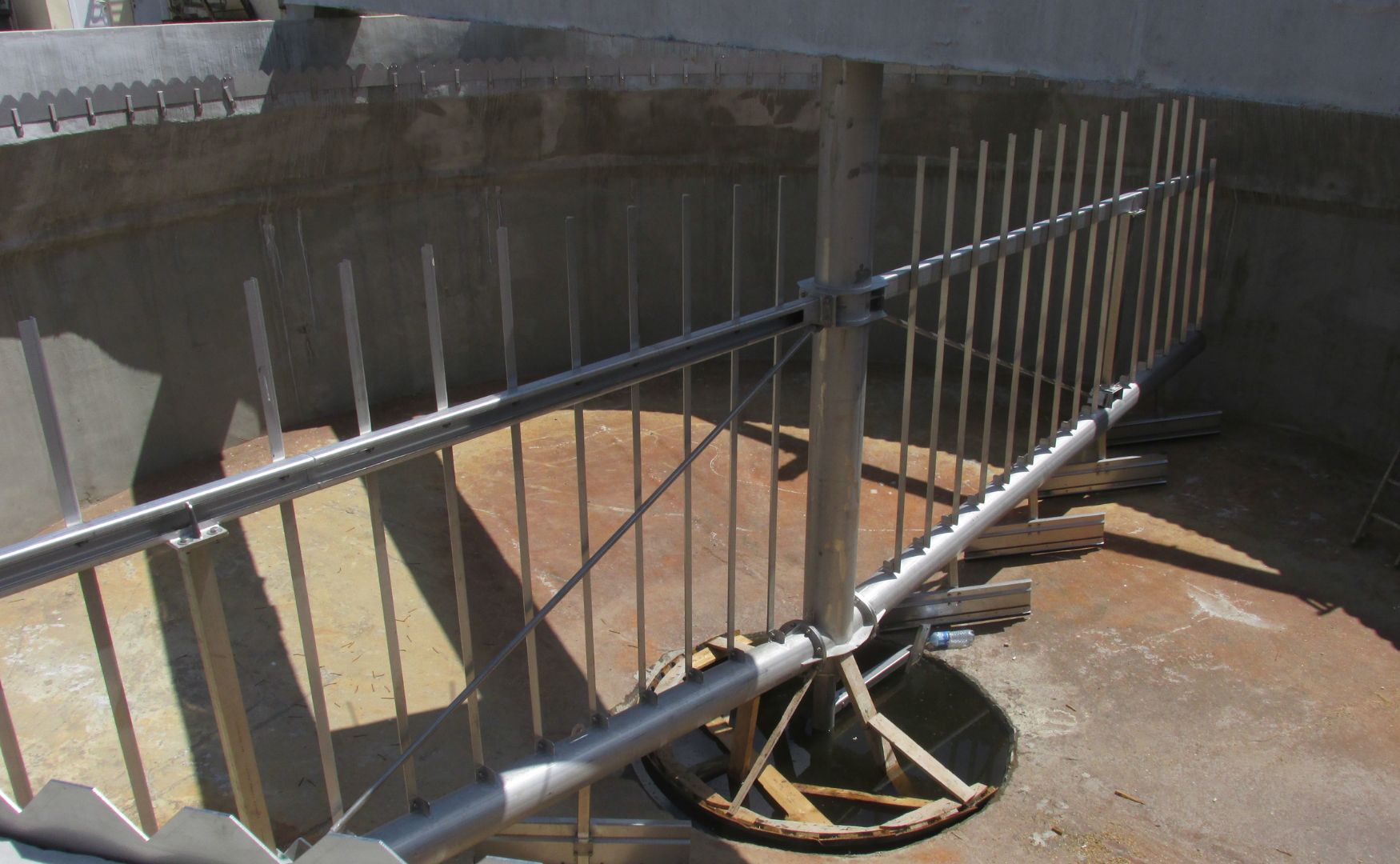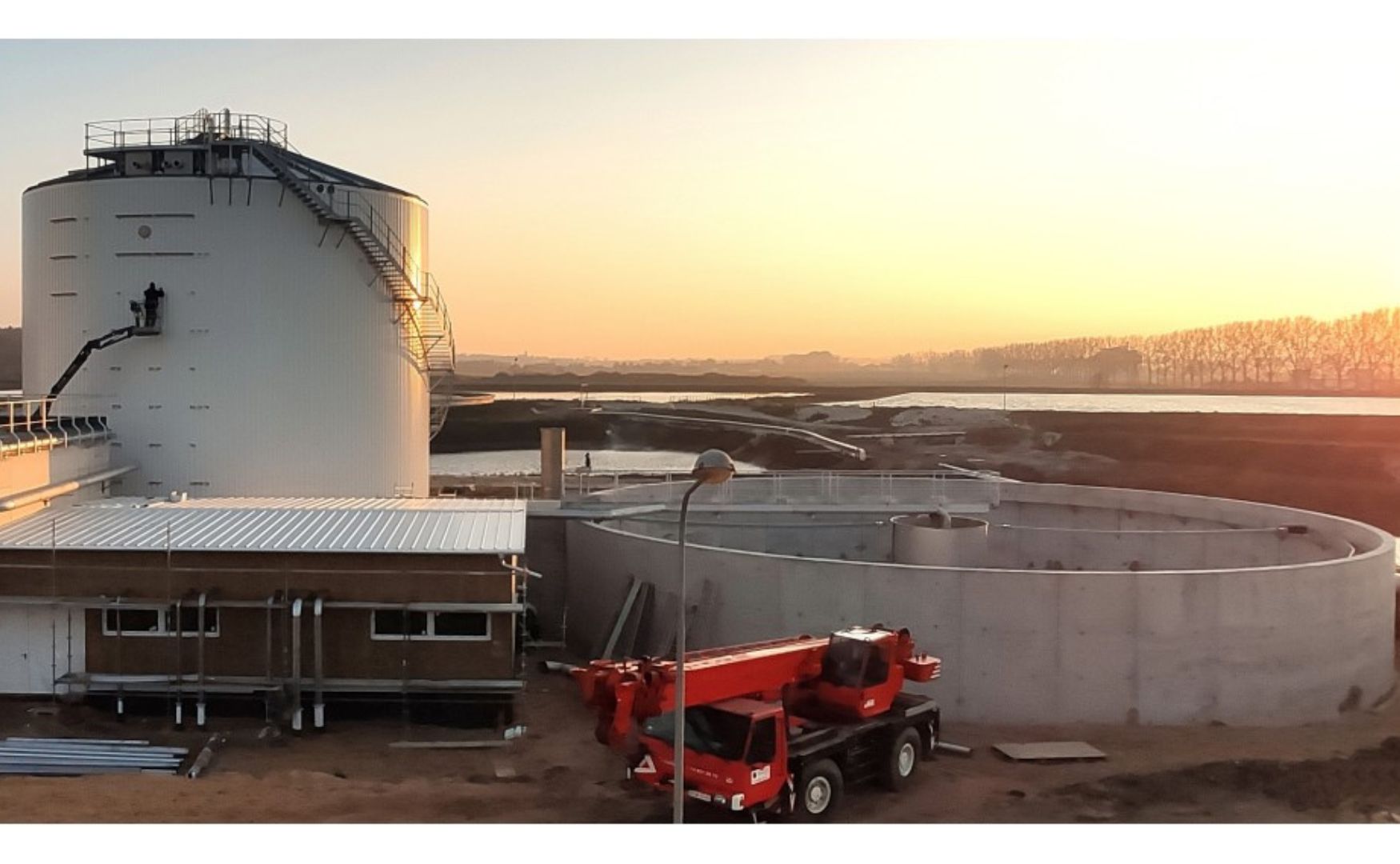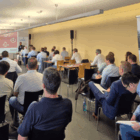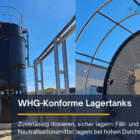Biomass recirculation is a crucial process in biological wastewater treatment in which the sludge containing a high concentration of active microorganisms is returned to the biological reactor system. This step enables effective and stable biological treatment by maintaining a sufficiently high concentration of microorganisms in the system. Biomass recirculation is mainly used in activated sludge processes and other biological reactor systems to ensure the continuous degradation of organic compounds and nutrients in wastewater.
Table of contents
Technical basics
In biological wastewater treatment, microorganisms are used to break down organic substances, nutrients such as nitrogen and phosphorus and other pollutants. These microorganisms accumulate in the form of active sludge or biomass. During the clarification process, the activated sludge is separated from the purified water and some of this sludge is discharged as excess sludge to keep the concentration stable. The remainder is returned to the reaction system - this is biomass recirculation.
Recirculation usually takes place in a separate circuit. The sludge can be recirculated in two ways:
- Internal: The sludge settled in a secondary clarifier or other separation unit is pumped directly back into the biological reactor (aeration tank). This takes place continuously or discontinuously, depending on the capacity utilization and treatment objective.
- External: In some systems, such as membrane bioreactors (MBR), the biomass is retained by the membrane, which means that internal recirculation is already integrated into the system architecture.
The role of biomass recirculation in practice
Biomass recirculation has several essential functions in biological wastewater treatment:
Maintaining the microorganism population: The recirculation of the biomass ensures that a high density of microorganisms is present in the biological reactor. These microorganisms are responsible for breaking down the organic compounds and nutrients. A higher concentration of biomass generally leads to a higher purification performance, as more microorganisms can work simultaneously.
Stabilization of the system: The continuous return of biomass keeps the sludge age and sludge concentration (MLSS - Mixed Liquor Suspended Solids) in the aeration tank stable. A stable ratio of microorganisms to organic load (F/M ratio) is crucial for the efficiency of degradation and the prevention of operational faults such as sludge discharge or oxygen deficiency.
Improved sludge quality: The regular return of biomass ensures improved sludge flocculation. Flocculent sludge structures are easier to settle, resulting in better separation of treated water and sludge in the secondary clarifier. This is particularly important to ensure the clarity of the purified water and to separate the solids efficiently.
Application in various systems
Activated sludge process: In the classic activated sludge process, the activated sludge is separated in a secondary clarifier after biological treatment. The return sludge is then fed back into the aeration tank. The sludge concentration in the activated sludge tank can be controlled and the biological activity maintained by returning the biomass.

Photo: Sediment removal in a circular clarifier for the recirculation of biomass(ALMA BHU BIO)
2. membrane bioreactors (MBR)
- In membrane bioreactors, the biomass is separated from the purified water by the membrane. As the membranes retain the microorganisms, the biomass remains in the reactor and continues to be used there. This leads to a high biomass concentration and increased purification efficiency.
3. anaerobic processes:
- In anaerobic processes, such as the UASB reactor (Upflow Anaerobic Sludge Blanket), the biomass is also retained in the system to maximize methane production and organic degradation. Continuous recirculation or augmentation of the biomass is crucial for the efficiency of these systems.

Photo: Anaerobic reactor(ALMA BHU GMR) with sedimentation tank for biomass recirculation (right)
Challenges and optimization
Biomass recirculation must be carefully monitored and controlled to ensure stable and efficient operation of the plant. Some challenges and optimization approaches are:
Sludge recirculation rate: The amount of recirculated sludge must be carefully regulated. Too low a recirculation rate can lead to a depletion of microorganisms in the reactor, while too high a recirculation rate can increase the hydraulic load on the system and overload the clarifier. A typical recirculation rate is around 50-100 % of the wastewater inflow.
Overaged sludge: If the biomass is kept in the system for too long, the sludge may become overaged. This leads to poorer floc formation and reduced biodegradation. Excess sludge must therefore be removed regularly.
Load fluctuations: If the organic load of the wastewater fluctuates greatly (e.g. in the food industry), the recirculation rate can be adjusted to respond to short-term increases in the organic load. Dynamic control systems are helpful here in order to maintain an optimum sludge concentration.
Advantages of biomass recirculation
The targeted recycling of biomass offers several advantages for the operation of biological wastewater treatment plants:
- Efficient decomposition of organic substances: Recirculation maintains a sufficiently high concentration of microorganisms in the reactor, which ensures the continuous and efficient degradation of organic substances.
- Compact plant construction: In combination with processes such as membrane bioreactor technology, the high biomass concentration can lead to a reduction in the required volume of the biological reactor, allowing more compact and space-saving plants to be built.
- Improved system stability: Biomass recirculation helps to compensate for fluctuations in the organic load and keep the system stable, especially when wastewater volumes or organic loads vary greatly.
Conclusion
Biomass recirculation is an indispensable component of biological wastewater treatment. It ensures stable microbiological activity, increases purification performance and optimizes the degradation of organic substances. In modern biological plants, especially in activated sludge processes and membrane bioreactors, the recirculation of biomass contributes significantly to the efficiency and longevity of the systems. A sound understanding and careful control of recirculation processes are essential to ensure optimal treatment of industrial wastewater.







